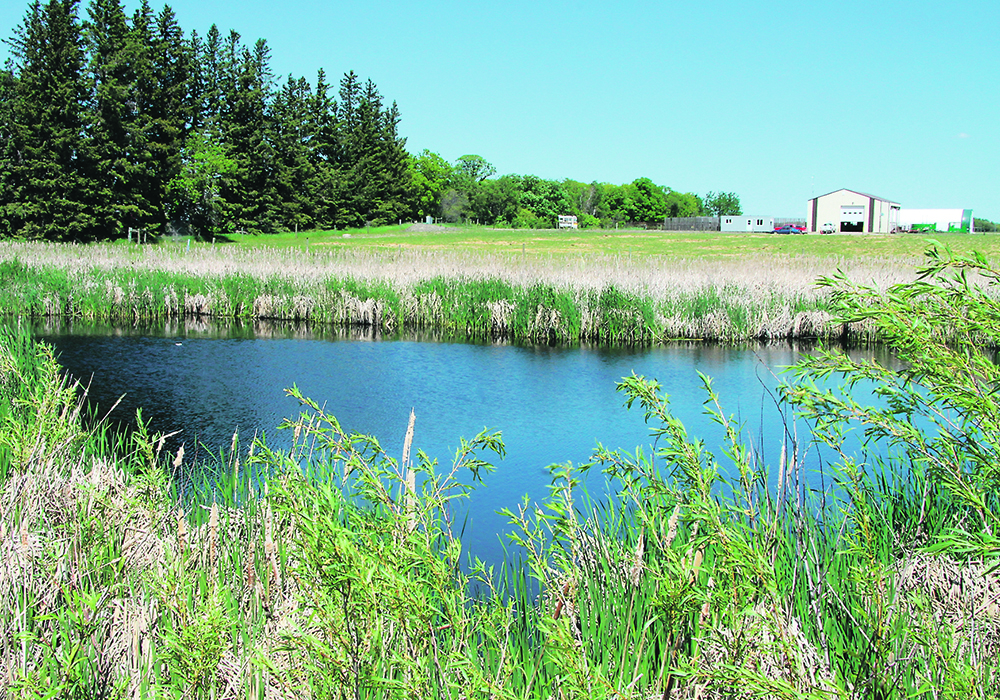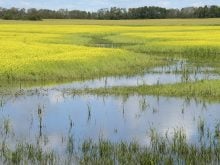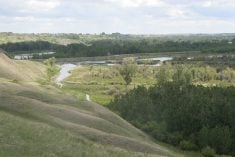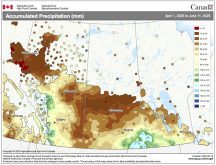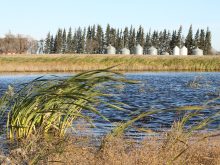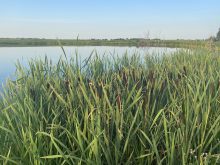Wetland retention is likely much lower than the figure advertised by the Water Security Agency, say scientists
REGINA — Scientists say the Water Security Agency’s claim that 86 per cent of Saskatchewan’s wetlands remain is based on recent rather than historical data.
“My understanding is that they were using baseline years around 2006,” said Colin Whitfield, associate professor at the School of Environment and Sustainability and Global Institute for Water Security at the University of Saskatchewan.
“And so I think the challenge there is that you risk missing things that have been drained many, many years ago, and land worked, and I think at best it can provide an underestimate of what the actual drainage number is.”
Read Also

Canola oil transloading facility opens
DP World just opened its new canola oil transload facility at the Port of Vancouver. It can ship one million tonnes of the commodity per year.
Researchers have questioned the 86 per cent figure since the WSA began advertising it and promoting a stewardship policy that would allow drainage based on a floor of existing wetlands within a network and how a certain amount could be retained.
Whitfield said it’s a challenge to reconcile the number with all the other studies over the years that suggest more than 40 percent of wetlands have been drained. As well, the WSA didn’t assess the entire province.
An environmental scientist who focuses on biogeochemistry, he studies interactions between water and nutrients and the loss of ecosystem services from wetland drainage.
In a soon-to-be published paper, he and his co-authors said about 10,000 hectares (24,710 acres) per year, based on 2001 to 2011 data, are drained across the Prairies. Much of that occurs in Saskatchewan.
The scientists studying the ecosystem impacts of drainage in the prairie pothole region found decisions to drain are often made without considering those impacts.
Whitfield said they found more nutrients move downstream and there is loss of dabbling ducks and wetland birds, loss of habitat and changes in the hydrological regime even at low levels of drainage.
He and others are concerned that the WSA’s focus on the potential benefits of drainage for agricultural production is a one-sided analysis.
He said it’s not just a few wetlands drained within a network, but most of them. At that scale, major consequences will occur and so far, there is no way to mitigate those.
Co-author and colleague Helen Baulch said there is no perfect policy, “but the key question is how to manage those trade-offs and risks.”
She said it’s critical to understand drainage at a level larger than micro-watersheds or drainage networks.
Meanwhile, a new coalition has formed to advocate for wetland conservation in the province.
Wetlands for Tomorrow launched June 5 and intends to create awareness of the WSA plan to drain two million acres, according to the press release.
“In just the last few years we saw the licensing of a drainage area that is 17 times the size of Regina without requirement that even one wetland (be) restored or protected or the impacts mitigated,” the release said.




